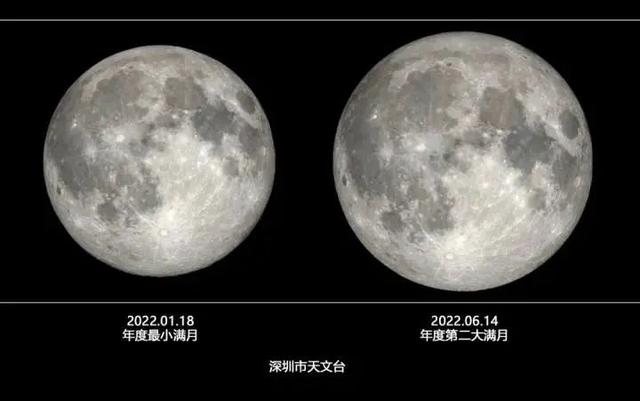What is a supermoon? How do supermoons form?
Supermoon (Supermoon) is a term proposed by American astrologer Richard Noelle in 1979. It is a phenomenon in which the moon is near perigee when the moon is new or full. When the moon is at perigee, a new moon occurs, which is called super New moon; the moon is exactly full when it is at perigee, known as a super full moon. Because the moon orbits the earth in an elliptical orbit, the distance between the moon and the earth is constantly changing, so the closer the moon is to the earth when the full moon occurs, the larger the full moon will be seen.
Astronomy science experts introduced that a “super moon” will appear in the night sky on June 14 (May 16 of the lunar calendar), which is also the “second full moon” this year. At that time, as long as the weather is fine, the public from all over our country can enjoy a round of the big moon, like a beautiful white jade plate hanging high in the sky.
When the moon and the sun are on both sides of the earth, and the ecliptic longitude of the moon and the sun is 180 degrees different, the moon seen on the earth is the most round, which is called “full moon”, also known as “look”. The fourteenth, fifteenth, sixteenth and even seventeenth of each lunar month are the times when the full moon may appear.
According to Xiu Lipeng, a member of the Chinese Astronomical Society and director of the Tianjin Astronomical Society, the elliptical orbit of the moon around the earth is a little more “flat” than the elliptical orbit of the earth around the sun. In addition, the moon is relatively close to the earth, so the moon is at perigee Appears slightly larger when nearby than when near apogee.
In a calendar year, there are usually 12 or 13 full moons. If the full moon happens to be near perigee, the moon will appear large and round at this time, which is called a “supermoon” or “super full moon”. “Supermoons” are not uncommon, ranging from once or twice a year to three or four times a year. The “biggest full moon” of the year occurs when the full moon occurs closest to the time when the moon is at perigee.
The full moon that appeared on June 14, the fullest moment appeared at 19:52, while the moon was too perigee at 7:23 on June 15, the roundest time and the perigee time were only less than 12 hours away, Therefore, the apparent diameter of the lunar surface of this full moon is very large, which is almost the same as the “largest full moon” of this year. This year’s “biggest full moon” appears on July 14 (the sixteenth day of the sixth lunar month).
“After the night falls on the 14th, interested members of the public from all over our country can pay attention to this big moon in the night sky and enjoy it with the naked eye without the need for any equipment.” Xiu Lipeng said, “This year’s ‘minimum full moon’ occurred in January this year. On the 18th, if a person with intentions had photographed the full moon at that time, he could use the same equipment and the same focal length parameters to photograph it again when the moon was at the same horizontal coordinate position. Just how ‘big’ is the big full moon.”
Post time: Jun-14-2022

